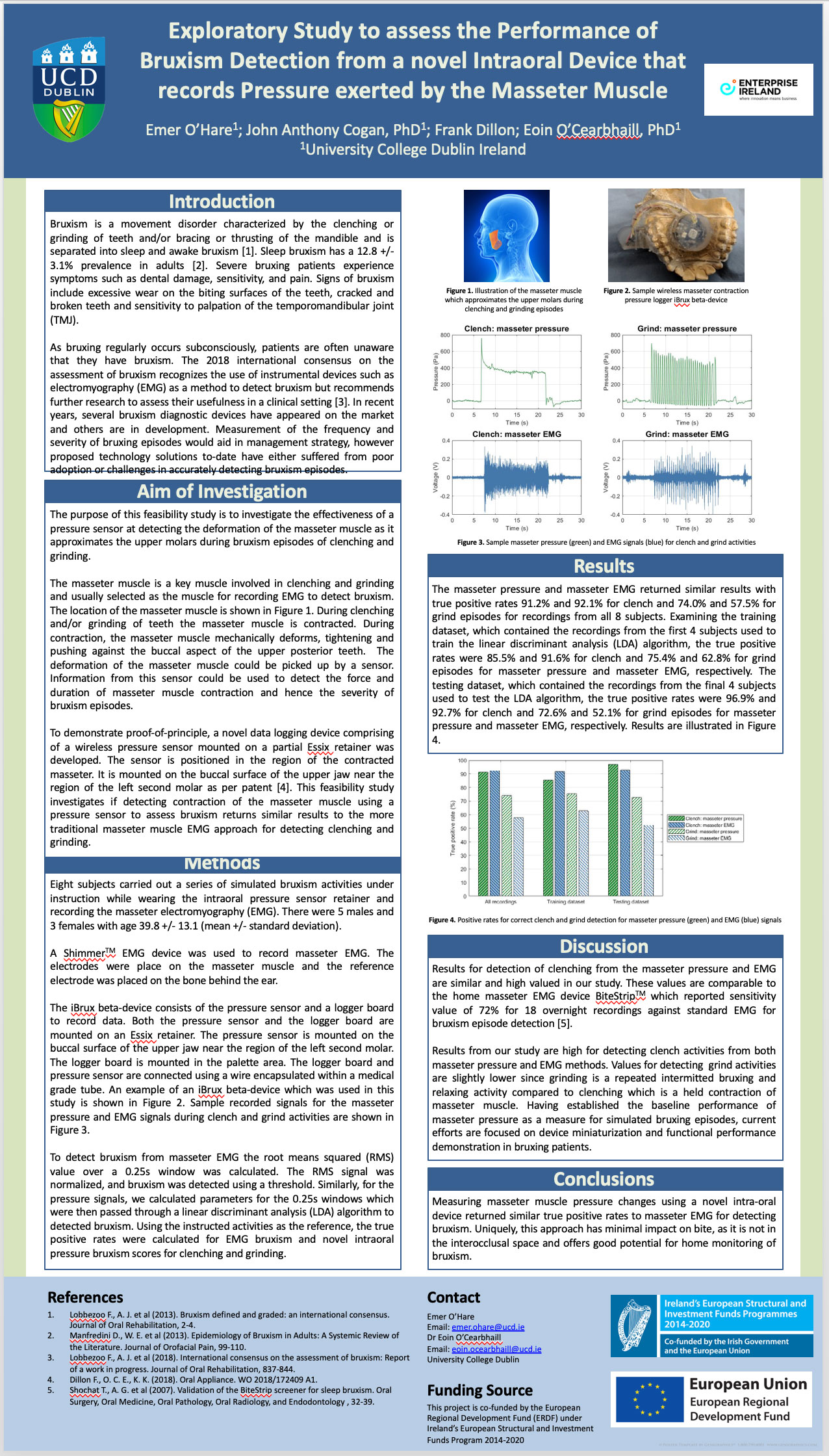Project Description
Bruxism is a movement disorder characterized by the clenching or grinding of teeth and/or bracing or thrusting of the mandible and is separated into sleep and awake bruxism [1]. Sleep bruxism has a 12.8 +/- 3.1% prevalence in adults [2]. Severe bruxing patients experience symptoms such as dental damage, sensitivity, and pain. Signs of bruxism include excessive wear on the biting surfaces of the teeth, cracked and broken teeth and sensitivity to palpation of the temporomandibular joint (TMJ).
As bruxing regularly occurs subconsciously, patients are often unaware that they have bruxism. The 2018 international consensus on the assessment of bruxism recognizes the use of instrumental devices such as electromyography (EMG) as a method to detect bruxism but recommends further research to assess their usefulness in a clinical setting [3]. In recent years, several bruxism diagnostic devices have appeared on the market and others are in development. Measurement of the frequency and severity of bruxing episodes would aid in management strategy, however proposed technology solutions to-date have either suffered from poor adoption or challenges in accurately detecting bruxism episodes.




Leave A Comment